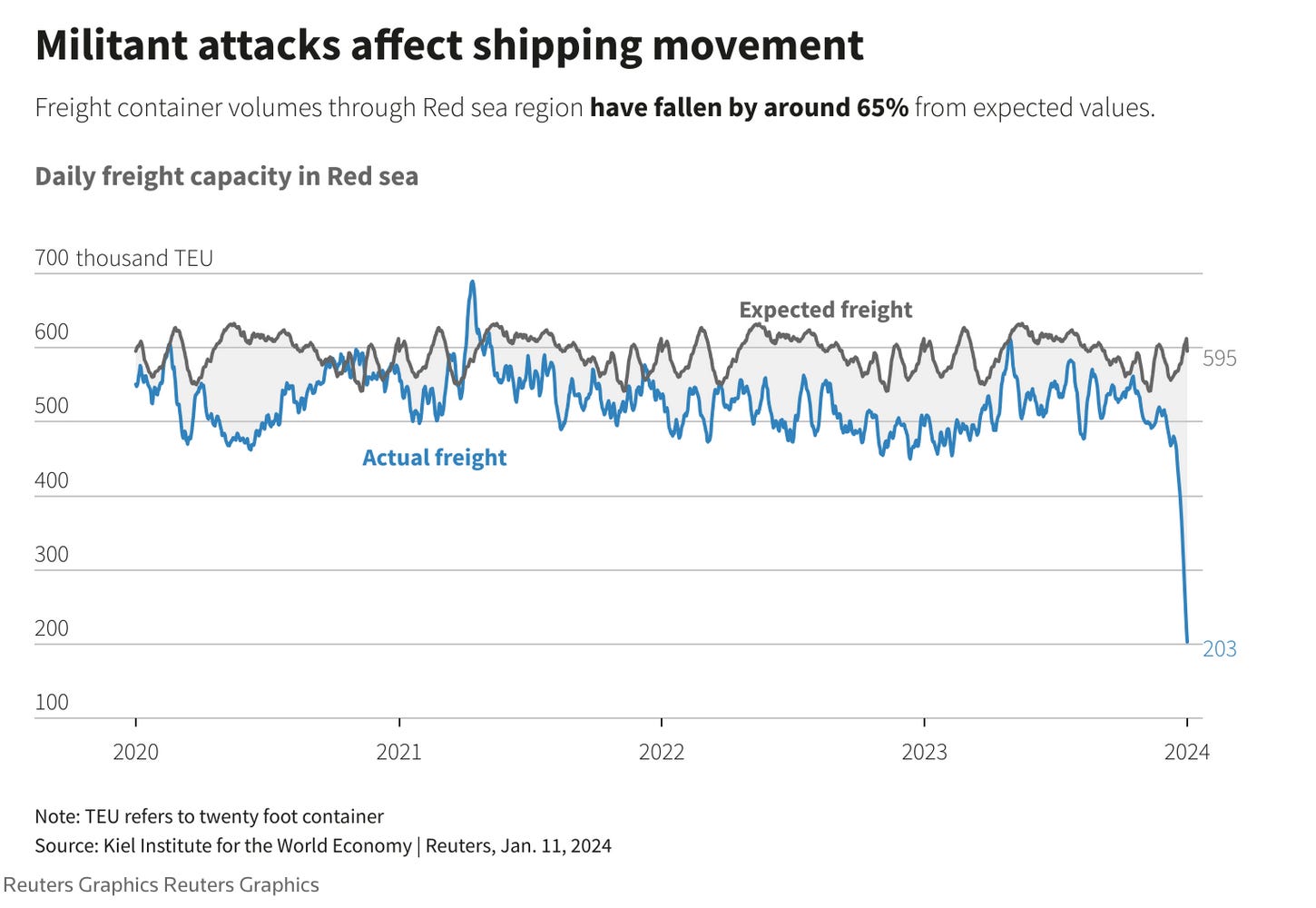The West fishes for an invitation from Yemen; Pyongyang advertises in Ukraine
(Originally published Jan. 19 in “What in the World“) As the U.S. launched fresh air strikes from the Red Sea against Houthi missile launchers in Yemen, U.K. Foreign Secretary David Cameron held a little-reported meeting with the Houthis’ principal rival.
Cameron’s meeting with Maj.-Gen. Aidarus al-Zoubaidi, the deputy president of Yemen’s U.N.-recognized government, suggests that the U.S. and its allies are looking for their own local proxy in the battle against the Iran-backed Houthis, one with the diplomatic recognition to legitimize an escalation in their intervention.
Western forces can’t exactly send in special forces to hit the Houthis without the blessing of Yemen’s official government. Well, they can, but they know they shouldn’t. The Administration of U.S. President Joe Biden is still smarting from having to withdraw military support in 2021 for the Saudi Arabia-led coalition that intervened against the Houthis but ended up killing civilians and creating a humanitarian crisis in Yemen.
Al-Zoubaidi has been calling for the West to provide his forces with equipment and training. He also advocates the partition of Yemen, with Houthis in the north and the government controlling the south, something neither the West—nor Saudi Arabia—can endorse without recognizing the Houthis as a legitimate group and thereby establishing a sovereign Iranian ally on Saudi Arabia’s underbelly. But the West will need a local ally if it’s to step-up its interdiction of Houthi attacks against Red Sea shipping.
And the West clearly needs to do more to stop the Houthis. “Well, when you say working are they stopping the Houthis? No,” Biden told reporters Thursday. “Are they gonna continue? Yes.”
In their latest attack, the rebels struck a U.S.-operated bulk cargo ship, necessitating a rescue of the crew by an Indian navy vessel that had been deployed to the area. India is not, however, a member of the U.S.-led coalition protecting shipping in the Red Sea. The attacks have crippled shipping through the Suez Canal, forcing more vessels to take the longer voyage around the Cape of Good Hope.

Violence around the region is spreading, with Pakistan on Thursday launching air strikes against rebels in the Iranian portion of the restive Baluchistan tribal region. While the air strike ostensibly hit Pakistani rebels harboring in Iran, Pakistan’s air force violated Iran’s air space to conduct the attacks. Iran’s Foreign Ministry condemned the attacks, but recognized they were aimed at a terrorist threat against an ally of Iran’s.
The spreading violence in the Middle East has siphoned weapons and attention from Ukraine. But Ukraine—and the potential threat of Russian attack elsewhere—hasn’t been forgotten in Europe. Next week, the newly expanded North Atlantic Treaty Organization will launch a four-month military exercise involving 90,000 troops—the largest such NATO exercise since the Cold War. Newly admitted member Finland will also take part, as will Sweden, though its own NATO membership has yet to be approved by Turkey.
The NATO troops will be practicing how to fend off a Russian invasion in eastern Europe. While the continued stalemate in Ukraine has allowed Russia to cement its control of the country’s southeast, the ongoing conflict there provides the West and its foes with an invaluable test-bed for weaponry. Unfortunately, Western arms manufacturers aren’t the only ones benefiting from the test drive. Russia’s recent decision to turn to North Korea for ammunition has provided Pyongyang with a much-needed marketing opportunity for its own wares.